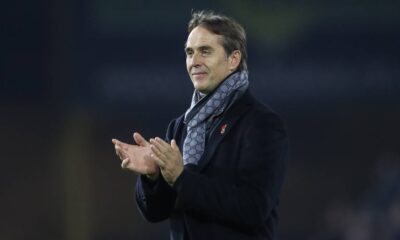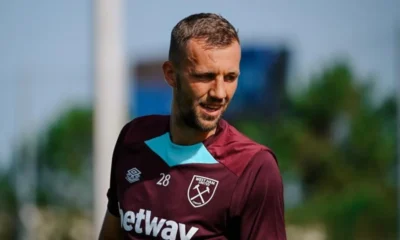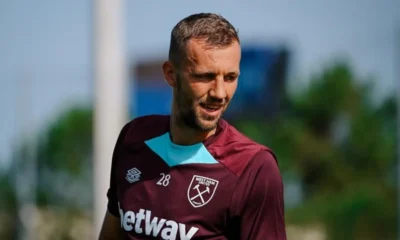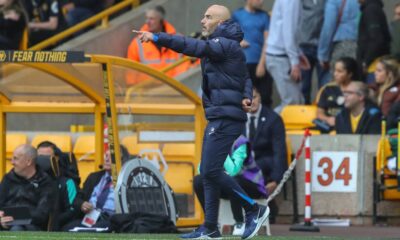Football
Jack Wilshere was supposed to be the new Arsenal legend, health was against it. Will he still return to action?
There are plenty of footballers who have been predicted a dream future full of trophies, glory and admiring respect for their footballing prowess. But very few of them even come close to fulfilling their potential and over time, for various reasons, they fall into mediocrity at best. One such player is former Arsenal star Jack Wilshere.
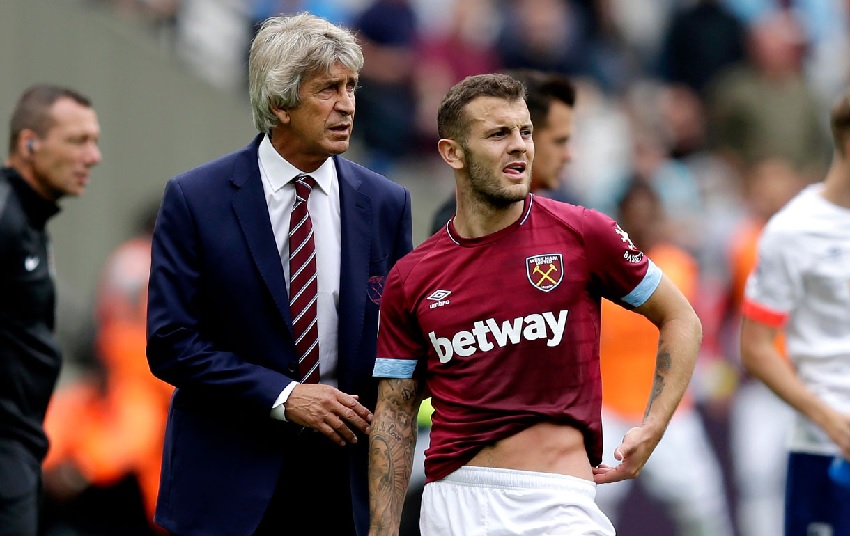
There are plenty of footballers who have been predicted a dream future full of trophies, glory and admiring respect for their footballing prowess. But very few of them even come close to fulfilling their potential and over time, for various reasons, they fall into mediocrity at best. One such player is former Arsenal star Jack Wilshere.
Raised with a cannon on his chest
Ever since Thiery Henry went on a rampage at the Emirates Stadium, the London club’s fans have been looking for a person to look up to, one that would give them hope in the long run and ensure a fight for the top places. That person was to be a small, skilful midfielder with a fabulous vision of the game, Jack Wilshere.
From the age of nine, when he transferred from Luton’s academy to the one under the Arsenal banner, he was taught football in London and grew up with a cannon on his chest. As is often the case with similarly renowned talents, Wilshere was ahead of his peers, and by a fair margin. That’s why he played with the seniors and very often wore the captain’s armband on his left arm despite being the youngest in any given team.
He had been playing for the Gunners reserves since he was sixteen and was very much to the liking of then A-team coach Arsene Wenger.
Wenger’s favourite
It was the French manager who was well known for his intuition on the potential of young players and young Jack was unmissable with his footballing prowess. And so he was given his chance. He joined the first team in the summer of 2008 and, with nineteen on his back, made his league debut at 16 years and 256 days, becoming the club’s youngest ever debutant.
It was by no means an easy path into Wenger’s packed line-up. At the time, players such as Cesc Fabregas, William Gallas, Samir Nasri, Robin van Persie and Tomas Rosicky were all making their way to the Emirates Stadium. Not a very promising prospect for a 17-year-old footballer, on the other hand a virtually inexhaustible well of experience at every single training session.
Getting game experience at Bolton
Even so, the Stevenage native did get some minutes. Minute by minute he was accumulating experience among the English league’s elite. However, he soon realised that training with the best wasn’t enough, that a young promising player needed to play regularly first and foremost to develop his match skills.
Therefore, after an agreement with the club’s management, he left in January 2010 for a six-month loan to Bolton Wanderers, who were still playing in the Premier League at the time.
He impressed with the Trotters, so much so that the club’s directive from the University of Bolton Stadium attempted to extend the young midfielder’s loan for another season. In vain. The Gunners management felt that Wilshere had matured and had what it takes to challenge for a starting line-up in the team he was groomed for from a young age.
Back home
After starting the season on the substitutes’ bench, the youngster worked his way into the starting line-up, playing alongside Alexander Song at the heart of the midfield. After very solid and above all consistent performances, he also made it to the national team led by Fabio Capello, who was completely captivated by his mature play as a defensive shield.
The Italian manager let it be known that Wilshere is the future of Albion. At the end of the 2010/11 season, he had played 49 games in all competitions and everything seemed to be on track for both Arsenal and Jack Wilshere himself.
Fatal injury setbacks
But in the summer training for the following season, the English midfielder injured his ankle in a match against the New York Red Bulls. And although, according to repeated statements by Arsene Wenger, his return to the pitch was very close, it took 17 months before he participated in a competitive match again.
Because of that injury, he missed the whole season and EURO 2012. He returned to the league scene against Queens Park Rangers with a performance of the same quality that Gunners supporters were used to. Shortly afterwards, he signed a new long-term contract with his employer.
He was a 100% leader on the pitch and in the locker room, and he wore the captain’s armband every now and then during injuries. His combativeness, commitment and overall quality was praised by coach Wenger more than once during interviews. Wilshere’s injury woes continued and although he was a difference maker whenever he was on the pitch, as time went on it was on the green turf that spectators saw less and less of him.
Just the usual injuries here, a small operation there, and above all, the seemingly never ending problems with both ankles of the skilful footballer.
A visit to Bournemouth
Understandably, even the London club itself could not be patient with Wilshere forever. And keeping a solidly paid player to lounge around in hospitals more than he runs around on the pitch is not a sporting, and certainly not an economically viable, strategy. So the 25-year-old went on a one-year loan to Bournemouth ahead of the 2016/17 season.
And once again he was a key and difference player for his team whenever he was on the pitch, the proof being the club’s player of the month award for both November and December. In April came another injury that sidelined him for the rest of the season.
In the summer of 2017, Arsene Wenger refused to sell him and incorporated him back into the Arsenal squad. The fragile Wilshere never played a full complement of minutes in the first few months. It wasn’t until 17 December 2017 that he started for the full 90 minutes, the first time that had happened since September 2014.
He lasted the rest of the year without any serious injury, but at the end of June he announced that he was leaving the Emirates Stadium for good as a free agent when his contract expired.
Falling down
As a reinforcement, West Ham United brought him into their squad, where he signed a three-year contract. However, his contract was terminated early after two years and due to a faithful return of injuries, he only managed to play 19 games in that time.
So in January 2021 he made his return to Bournemouth, already operating in the Championship. However, he didn’t do too well there either and after six months his engagement at the Vitality Stadium ended.
At the moment, the 30-year-old midfielder is currently without an engagement and it is hard to imagine that he will still show up in the top English league competition.
Source: Transfermarkt, Livesport, One Football

